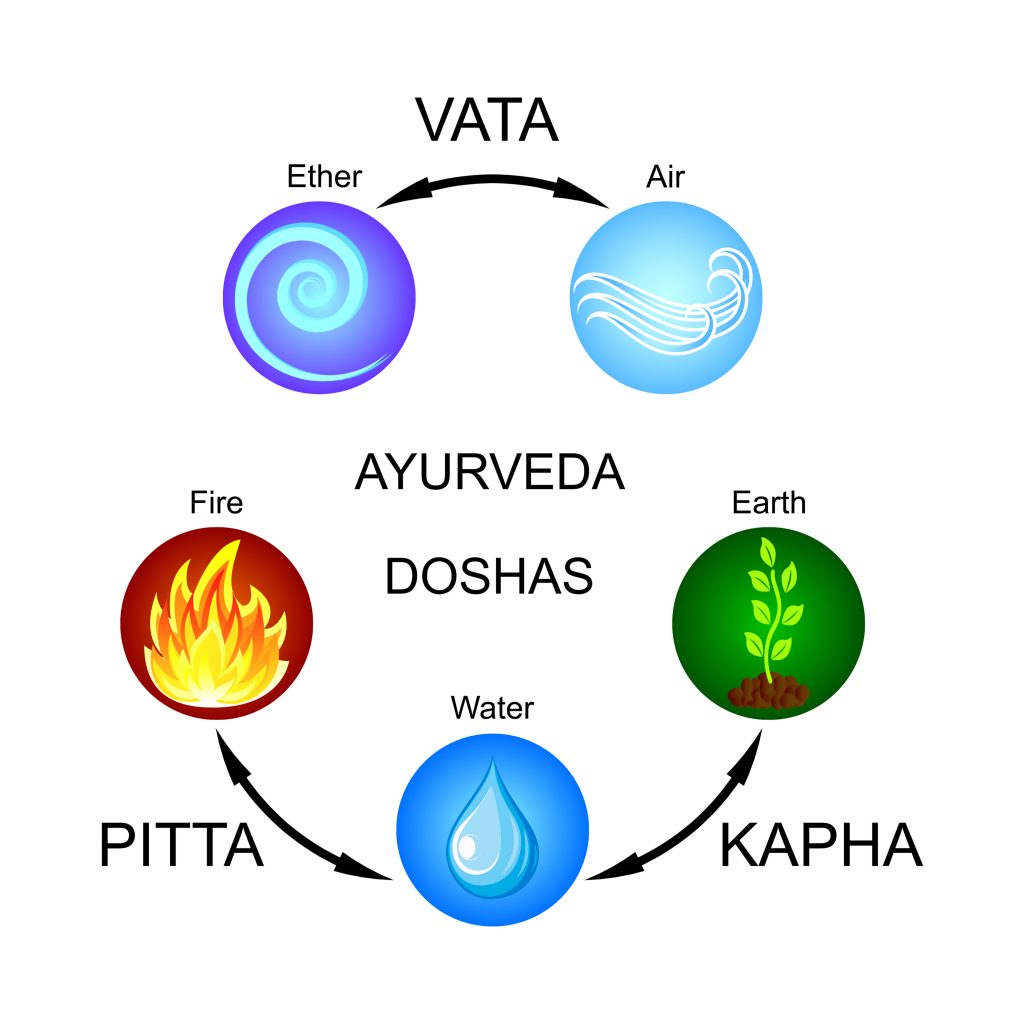Most people who have ever heard about Ayurveda came across the 3 doshas vata, pitta and kapha. The doshas are the leading principle of physiology and the psyche. First and foremost, they determine the processes and properties and reactions of the human organism. These are dynamic principles that are influenced by time and the environment, i.e. the macrocosm that surrounds us humans. Literally “dosha” means “that what makes ill”. In the healthy individual, the doshas are in a balanced state. If they get out of balance, discomfort and illness arise. The aim in the Ayurveda is therefore to bring the doshas back into an equilibrium.
Vāta
Vata is derived from the elements ether and air. It is the kinetic and thus leading and initiating principle. It is responsible for all movements, receiving and forwarding as well as their synchronization. These include, among others [Ca.Su. 12/1f]:
- All movements of the joints and muscles (including smooth muscles in the digestive tract and heart muscle),
- Transport of blood, lymph and metabolic products, waste materials, oxygen, carbon dioxide within the body,
- Transport into and out of the cells,
- Cell division
- Control and regulation of all natural and pathological processes including the transmission of nerve impulses and their processing as well as hormonal control
Pitta
Pitta is derived mainly from the fire element, to a small extent it also symbolizes the water element (flow). Pitta stands for transformation, metabolism and heat balance. In addition, Pitta is the intellectual principle. The most important functions in detail are:
- Digestion
- Breakdown of food components (metabolism)
- Hunger and thirst
- Heat
- Upload
- Vision
- Courage
- Anger and aggression
- Intelligence, astuteness
So people with a high pitta are awake, attentive and quick, astute thinkers. They are curious and can adapt very quickly to new situations. Their digestion is very good, know the feeling of pronounced hunger and thirst, have a good digestion. However, these people are also prone to heartburn and acid production as well as anger.
Kapha
Kapha is derived from the elements water and earth. Kapha stands for stability and resilience. People with a high proportion of Kapha appear stable and calm. The most important functions in detail:
- Structure of the body from the food components (anabolism)
- Immunity and resilience (also on a mental level)
- Lubrication of joints
- Fertility
- Stability
- Tolerance and patience (live and let live)
- Satisfaction (resting in oneself)
Nothing disturbs these people so quickly. On the other hand, they are sometimes sluggish and are not so willing to learn new things or to adapt. Often their physique also symbolizes this to the outside. What is once learned, remains in the memory.
Balance of doshas
The balance of these three functional principles within the body is the prerequisite for physical and mental health. An imbalance is the trigger for suffering and disease. In addition, the phases of life are also divided into a kapha (from birth to the onset of puberty), pitta (from puberty to middle age) and a vata phase (middle age to death). In the same way, the course of the day and year are dominated by a respective dosha. The different geographical and climatic conditions also exert a strong influence on the doshas. It follows that for each person according to his own constitution, but also by the individual circumstances of life, a specific balance of the doshas results.

